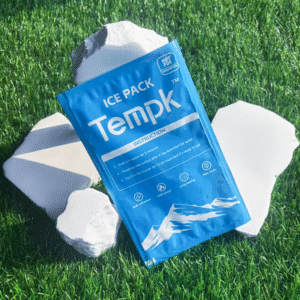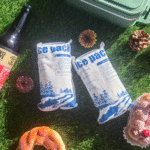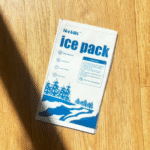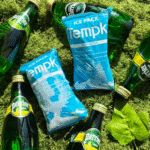Is a Foil‑Lined Bag Better for Dry Ice Shipping?
Keeping frozen shipments cold isn’t easy.* When you mail frozen meat, seafood or medicines you need packaging that can withstand hours of warm warehouses and van rides. A foil‑lined bag combines reflective aluminum and insulating foam to slow down heat transfer, but is it the best choice for dry ice? In this comprehensive guide you’ll learn how foil‑lined bags work, their pros and cons compared with traditional Styrofoam boxes, and how to safely pack dry ice for shipping.*
-
How foil‑lined bags insulate: Understand reflective and barrier‑based insulation and how it keeps dry ice cold.
-
Benefits vs drawbacks: Compare foil‑lined bags with Styrofoam and gel packs using long‑tail keywords such as foil‑lined cardboard vs Styrofoam.
-
Safe packing steps: Learn to calculate dry ice quantity, layer it correctly, vent gas and label packages according to UN 1845 and IATA rules.
-
When to choose foil vs foam: Match packaging to shipment duration, product type and cost constraints using industry insights.
-
2025 trends: Discover innovations like smart sensors, biodegradable liners and hybrid cooling solutions.
What Is a Foil‑Lined Bag and How Does It Work with Dry Ice?
Basic Construction and Insulation Mechanism
A foil‑lined bag (sometimes called a mylar or aluminum foil bag) is a flexible pouch with multiple layers.
The outer layer is usually strong fabric or paperboard; the inner layer is reflective foil laminated to a foam or bubble wrap core. This hybrid structure combines durability with thermal performance.
Gentle Packing’s 2025 report explains that foil‑lined cardboard boxes have an outer corrugated layer for strength and an inner foil layer bonded to foam or air bubble film to form a thermal barrier. The foam traps air pockets and the foil reflects radiant heat.
Dry ice sublimates directly from solid carbon dioxide into gas at –78.5 °C (–109.3 °F). To slow this process, insulation must resist heat transfer via conduction, convection and radiation. In a foil‑lined bag:
-
Reflective foil blocks radiant heat: The shiny layer acts like a mirror, bouncing thermal radiation away. Gentle Packing notes that aluminum foil reflects radiant heat and prevents absorption.
-
Foam or bubble film traps air to reduce conduction and convection: Tiny air cells slow heat flow, creating a stable internal climate.
-
Multiple layers enhance performance: Combining reflective foil with foam increases total R‑value (thermal resistance) to R 5–10 when used with air gaps.
These design features make foil‑lined bags effective for deep‑freeze shipments, especially when paired with dry ice. The reflective foil helps maintain the ultra‑cold environment and the foam adds structural cushioning and insulation.
Why Not Use Plain Aluminum Foil or Styrofoam?
Aluminum foil alone is not enough. It reflects radiant heat but lacks bulk insulation. In cooler bags, foil liners must be combined with foam or bubble film to provide a barrier against conductive and convective hea. Plain foil quickly warms up because it has little thickness; you need trapped air to slow heat flow.
Styrofoam (expanded polystyrene or EPS) has long been used for shipping frozen goods. EPS provides high R‑value per inch but has problems:
-
Bulk and cost: Styrofoam is bulky and expensive to store and transport, occupying warehouse space and increasing shipping costs
-
Environmental impact: EPS is non‑biodegradable and difficult to recycle; it persists in landfills.
-
Mess and damage: EPS boxes can crack, shedding messy beads that contaminate products and create poor unboxing experiences.
-
Limited branding: Its rigid generic form restricts customization and branding opportunities.
Foil‑lined bags and boxes address these issues by being foldable, space‑efficient, and more sustainable. Many designs can be flat‑packed, reducing inbound freight costs and warehouse footprint. They use recyclable cardboard and sometimes recycled foil materials. They also offer clean handling without flaking, which is important for food and pharmaceutical shipments.
Foil‑Lined Bag vs. Mylar Bag vs. Foam Insulation
Some people use the terms foil‑lined, mylar and silver insulated bag interchangeably. Mylar is a brand name for biaxially oriented polyethylene terephthalate (BoPET). In Subzero Dry Ice’s comparison, silver mylar bags are lightweight, moisture‑resistant and reflect radiant heat. They’re cost‑effective and good for short‑term use but offer less insulation than foam. Foam (EPS or polyurethane) provides superior thermal resistance and durability but is heavier and more expensive.
A foil‑lined bag often combines a mylar foil layer with a foam core, blending the advantages of both. It reflects heat like mylar and insulates like foam. When evaluating whether a foil‑lined bag is better for dry ice, consider shipment duration, temperature target, cost, regulatory requirements and sustainability goals. We’ll explore these factors in detail below.
Benefits and Drawbacks of Using Foil‑Lined Bags for Dry Ice
Advantage 1 – Efficient Heat Reflection and Extended Cold Retention
Foil‑lined bags excel at deflecting radiant heat. The reflective aluminum surface bounces up to 97 % of radiant energy according to TempControlPack, reducing heat absorption. When combined with foam, this barrier slows conduction and convection, helping dry ice last longer.
In practical terms:
-
Maintains sub‑zero temperatures: Gentle Packing notes that foil‑lined boxes paired with dry ice can preserve sub‑zero conditions for 24 to 72 hours.
-
Pairing with gel packs or dry ice: They work with both gel packs (2 °C–8 °C shipping) and dry ice (–78.5 °C deep‑frozen shipping). Proper placement (evenly around the product) is crucial.
This makes foil‑lined bags particularly suitable for frozen meat, seafood, ice cream, medical samples and vaccines—products that require deep freezing.
Advantage 2 – Space Efficiency and Branding
Unlike rigid EPS containers, foil‑lined cartons and bags fold or flat‑pack. This reduces inbound freight volume and improves warehouse efficiency. They also offer a clean, debris‑free unboxing experience and custom branding opportunities. The outer kraft or coated paperboard surface supports full‑color printing so brands can feature logos, QR codes and marketing graphics. These features help e‑commerce businesses enhance customer experience and reinforce brand identity.
Advantage 3 – Sustainability
Many foil‑lined bags use recyclable cardboard and partially recycled foil. They align with corporate environmental, social and governance (ESG) goals. EPS, by contrast, is non‑biodegradable and often ends up in landfills. Some modern foil‑lined bags incorporate biodegradable materials or water‑based adhesives, further reducing environmental impact.
Advantage 4 – Moisture Resistance and Leak Prevention
Foil‑lined bags are generally waterproof and leak‑proof. The reflective foil layer and sealed seams prevent condensation or melted ice from seeping out. The TempControlPack guide notes that proper vent design allows CO₂ gas to escape while maintaining leak integrity. This prevents messy leaks and protects labels and documentation.
Drawback 1 – Higher Cost than Plain Foam
Foil‑lined bags are more expensive than simple mylar bags or standard EPS liners. The multi‑layer structure and reflective foil raise manufacturing costs. However, when accounting for improved heat retention, sustainability, and branding, many companies find the investment worthwhile.
Drawback 2 – Less Bulk Insulation than Thick Foam
While foil‑lined bags provide good overall insulation, thick foam (like polyurethane) still offers a higher R‑value per inch. In cooler bag testing, 5 mm foam plus aluminum foil kept ice packs effective below 10 °C for 6.5 hours; thicker 8 mm foam extended performance to 8–12 hours. For extreme long‑duration shipments (48–96 hours), thicker foam or rigid vacuum panels may be necessary.
Drawback 3 – Need for Proper Handling and Venting
Dry ice releases carbon dioxide gas. Without proper venting, a sealed foil‑lined bag could burst or cause pressure build‑up. Vented dry ice bags use fold‑and‑clamp closures or micro‑perforated film to allow gas to escape safely. Using a non‑vented foil‑lined bag requires manually leaving openings or adding vent holes, which can compromise insulation. We’ll discuss venting and safety in the next section.
How to Use Foil‑Lined Bags for Dry Ice Safely
Step 1 – Choose the Right Bag Size and Insulation Thickness
Select a bag size that matches your product volume. Overfilling reduces airflow and cooling efficiency, while an oversized bag wastes dry ice and increases shipping costs. Cooler bags generally work best when filled to 80–90 % of capacity. Consider foam thickness: 3 mm EPE foam retains cold for ~6 hours, 5 mm for 8–12 hours, and 8 mm for 12–24 hours. Use thicker foam for long‑distance shipping.
Step 2 – Calculate the Correct Dry Ice Quantity
Dry ice sublimates at 5–10 pounds per 24 hours. UPS guidelines recommend using 5 pounds of dry ice per 15 quarts of storage for a 24‑hour shipment, adjusting for outside temperature and box insulation. For shipments lasting 48–72 hours, you may need 10–20 pounds. TempControlPack provides a rough estimator: for 12–18 hour transit, use 5 lbs; for 24–48 hours, 10 lbs; and for 72 hours, 15–20 lbs. Always err on the side of more dry ice for warm climates or long transit times.
Step 3 – Pre‑Chill the Bag and Product
Pre‑chill or freeze the product and the foil‑lined bag before packing. Gentle Packing emphasizes preconditioning the products to reduce the initial thermal load. This simple step ensures the cold source (dry ice) isn’t immediately consumed to cool warm products.
Step 4 – Layering Technique
-
Insert a vented inner bag or liner: Use a clear 3 mm plastic bag to hold dry ice pellets or blocks; these are designed to handle dry ice and prevent tears. Vented bags allow gas escape and reduce condensation.
-
Place dry ice at the bottom: A base layer of dry ice ensures cold air flows upward. For longer shipments, place additional pieces along the sides or top to create an even cold environment.
-
Add a spacer or cardboard sheet: Separate the product from direct contact with dry ice to prevent freeze damage. Use corrugated cardboard or foam pads.
-
Place the product inside: Wrap items individually in moisture‑resistant packaging. Keep them tightly packed to minimise empty space.
-
Fill voids with cushioning: Use paper, bubble wrap or insulated fillers to prevent movement. Uneven placement can create hot spots or pockets.
-
Add additional dry ice on top (optional): For long shipments, a layer on top ensures cold air descends naturally.
-
Close the inner liner and vent: Seal the inner bag using fold‑and‑clamp or band‑and‑fold closures; ensure vents remain unobstructed.
Step 5 – Seal and Label the Outer Bag/Box
Leave some headspace in the outer bag or box so carbon dioxide gas can escape. Do not tape over vents. Use breathable packaging (e.g., corrugated cardboard with vent holes). Then, affix required labels:
-
UN 1845 (Dry Ice, or Carbon Dioxide Solid): Mark the package with the hazard class (Class 9) and UN number.
-
Net weight of dry ice: Indicate in kilograms or pounds.
-
Orientation arrows: Show “This side up” if using a box.
-
Shipper’s and consignee’s information.
Both UPS and FedEx require compliance with 49 CFR 173.217 for ground shipments and IATA Packing Instruction 954 for air shipments. The maximum dry ice per package on passenger aircraft is typically 2.5 kg (5.5 lbs); cargo aircraft allow up to 200 kg but require additional paperwork. Always check carrier policies.
Step 6 – Safety Precautions
Dry ice is extremely cold and can cause frostbite. Always wear insulated gloves and eye protection when handling it. Do not allow dry ice to come into direct contact with skin or food. Keep shipments in well‑ventilated areas during staging; carbon dioxide concentrations above 5,000 ppm for 8 hours or 30,000 ppm for short periods are considered hazardous. Avoid storing dry ice in airtight containers, vehicles or passenger compartments. Use a vent bag or open the trunk when transporting.
Comparing Foil‑Lined Bags, Styrofoam Boxes and Gel Packs
Below is a high‑level comparison of different packaging options for dry ice shipments. The values are approximate and will vary by supplier and application.
| Packaging Type | Thermal Resistance | Durability | Space Efficiency | Typical Shipping Duration | Cost | Suitability for Dry Ice | Practical Significance |
|---|---|---|---|---|---|---|---|
| Foil‑lined bag/box | Reflects radiant heat; foam core slows conduction | Moderate; flexible bag may tear if overloaded; some boxes use sturdy corrugated exterior | Excellent; fold‑flat reduces warehouse space | 24–72 h with dry ice depending on foam thickness and ice quantity | Moderate to high | Suitable; reflective foil reduces sublimation; venting required | Ideal for brands seeking balance between performance, branding and sustainability; good for deep‑freeze shipments and last‑mile delivery |
| Styrofoam (EPS) box | High R‑value per inch; good conduction barrier | High but brittle; prone to cracking and shedding beads | Poor; bulky; cannot collapse | 48–96 h with proper dry ice; can extend with thicker walls | Low to moderate | Very suitable; widely used for long journeys | Good for long‑distance frozen shipments and high‑value goods when storage space is not a concern; less eco‑friendly |
| Gel packs (ice/gel packs) | Maintains 2 °C–8 °C; not sub‑zero | High; flexible and reusable | Excellent; lightweight | 12–24 h; quickly warms in hot climates | Low; reusable | Not suitable for dry ice; used instead of dry ice | Best for chilled goods like produce or pharmaceuticals that should not freeze; combining with foil‑lined bags can extend cold retention |
Practical Tips for Users
-
Short journeys (<24 h): Foil‑lined bags with moderate foam (3–5 mm) and 5–10 lbs of dry ice provide sufficient cold retention. Use them for local deliveries or day‑long shipments.
-
Medium journeys (24–48 h): Choose foil‑lined boxes with thicker foam (5–8 mm) or pair foil bags inside a corrugated box. Use 10–15 lbs of dry ice and consider placing dry ice on top and bottom for even cooling.
-
Long journeys (48–72 h): For cross‑country shipments or remote areas, consider EPS or rigid polyurethane foam with foil‑lined inserts. Use at least 20 lbs of dry ice and ensure boxes are vented and labelled. Some shippers use combination packaging—an EPS box inside a foil‑lined sleeve—for added security.
Real‑world case: A direct‑to‑consumer meal kit company tested vented foil‑lined bags with fold‑and‑clamp closures. They saw fewer acceptance failures and reduced product thawing compared with non‑vented line. The ability to release CO₂ gas while maintaining insulation improved reliability and customer satisfaction.
When to Choose Foil‑Lined Bags Over Other Options
Best use cases for foil‑lined bags:
-
Short‑to‑medium shipments where branding and sustainability matter: e‑commerce brands shipping frozen desserts, meal kits, or premium chocolates benefit from the fold‑flat convenience and custom printing options. The neat unboxing experience also supports marketing efforts.
-
Deliveries requiring quick assembly and disposal: Foil‑lined bags are lightweight and user‑friendly. Recipients can dispose of them more easily than bulky EPS. Reusable options with zipper closures are also available.
-
Hybrid packaging: Some shippers place foil‑lined bags inside corrugated boxes or pair them with gel packs for flexible temperature management. Combining gel packs and dry ice can reduce dry ice consumption and prevent items from freezing solid.
When foam or EPS might be better:
-
Long‑distance shipments (72 h+) or extreme temperatures: Thick foam or vacuum insulated panels maintain sub‑zero temperatures longer than thin foil‑lined bags. Use them for pharmaceuticals, vaccines or cross‑continent food shipments.
-
Very fragile or heavy products: Rigid foam boxes provide better structural protection during transit and stacking, reducing crush risk.
Subtopics and Expanded Insights
The Science of Insulation: Conduction, Convection and Radiation
Understanding heat transfer helps you choose the right packaging. Heat moves via:
-
Conduction: Direct transfer through materials. Foam insulators slow conduction by creating air pockets. In cooler bag testing, thicker foam improved R‑value; 8 mm EPE with a sealed zipper maintained temperatures for 12–24 hours.
-
Convection: Movement of heat via fluids or gases. Proper bag design minimises air movement around products. Venting allows CO₂ gas to escape but must be balanced with insulation.
-
Radiation: Electromagnetic energy (e.g., sunlight). Reflective foil layers block radiant heat; this is crucial for shipments exposed to sun or tarmac conditions.
Factors Affecting Dry Ice Life in Foil‑Lined Bags
Several variables influence how long dry ice lasts:
-
Ambient temperature: High external temperatures accelerate sublimation. Plan for extra dry ice in summer or hot climates.
-
Initial product temperature: Pre‑freezing reduces thermal load, extending ice life.
-
Transit time and handling: Frequent opening of the package or long dwell times on loading docks increases heat gain.
-
Cold source placement and distribution: Uneven placement causes temperature stratification. Distribute dry ice evenly and avoid large voids.
-
Insulation thickness and R‑value: Higher R‑value extends cold retention.
-
Venting and gas escape: Proper venting prevents pressure build‑up but also allows more heat to enter. Choose vent size carefully.
Regulatory and Safety Considerations
-
Hazard classification: Dry ice is classified as a Class 9 dangerous good (UN 1845). Shipments must comply with 49 CFR 173.217 for domestic transport and IATA regulations for air cargo.
-
Weight limits: Passenger aircraft typically limit each package to 2.5 kg of dry ice; cargo aircraft allow up to 200 kg but require special documentation.
-
Labeling: Packages must display UN 1845, net weight of dry ice and hazard pictogram. Some carriers also require a “Dry Ice” label and a “Carbon Dioxide Solid” statement.
-
Ventilation: Packages must permit release of CO₂ gas to prevent rupture or suffocation hazards. Do not ship dry ice in sealed plastic bags without vents.
-
Personal protective equipment (PPE): Wear gloves and protective eyewear when handling dry ice to avoid frostbite or burns.
-
Proper disposal: Allow leftover dry ice to sublimate in a well‑ventilated area. Do not dispose of dry ice in sinks or toilets (it can freeze pipes) or in enclosed spaces (risk of asphyxiation).
Environmental and Sustainability Implications
Foil‑lined bags are increasingly favored because they reduce plastic waste and can be recycled. Many brands now integrate biodegradable materials or offer take‑back programs. Additionally, innovations like phase change materials (PCMs) and hybrid cooling systems are combined with foil‑lined packages to reduce dry ice usage and carbon footprint. Using less dry ice also lowers emissions because dry ice production requires significant energy; any reduction improves sustainability.
2025 Trends and Innovations in Foil‑Lined Packaging
Trend Overview
The cold chain industry is evolving rapidly. According to the TempControlPack 2025 guide, new foil‑lined bags incorporate smart sensors that monitor temperature and humidity, biodegradable insulation, and hybrid cooling solutions combining dry ice, gel packs and PCMs. These innovations aim to enhance performance, reduce environmental impact and enable real‑time tracking.
Latest Advances
-
Smart packaging with IoT sensors: Miniature data loggers embedded in foil‑lined bags transmit temperature and location data to ensure the cold chain remains intact. This helps shippers make real‑time decisions and respond to deviations quickly.
-
Biodegradable and recyclable materials: Companies are developing foil‑lined bags made from compostable films and plant‑based foams, reducing reliance on petroleum‑based plastics.
-
Hybrid cooling systems: Combining dry ice with phase change materials (PCMs) or gel packs extends temperature hold times while minimizing dry ice consumption. For example, a foil‑lined bag might use gel packs to maintain 2 °C–8 °C for initial transit, then rely on dry ice to keep items below 0 °C for the remaining time.
-
Customization and personalization: With advancements in digital printing, brands can customize the exterior of foil‑lined boxes with QR codes, unique designs or promotions, enhancing the unboxing experience and marketing value.
-
Regulatory harmonization: Efforts to streamline international regulations (e.g., aligning IATA and domestic rules) make it easier for shippers to adopt standardized venting, labeling and weight guidelines across markets.
Market Insights
Consumer demand for direct‑to‑door frozen foods, meal kits and pharmaceuticals continues to rise. Brands are investing in high‑performance insulation to prevent spoilage and meet sustainability expectations. Foil‑lined packaging appeals to environmentally conscious consumers and premium brands seeking to differentiate with innovative packaging. In Asia and Europe, government regulations on single‑use plastics are accelerating the shift towards recyclable foil‑lined cartons and biodegradable liners.
Frequently Asked Questions (FAQ)
Q1: How long does dry ice last in a foil‑lined bag?
Dry ice sublimates at about 5–10 pounds every 24 hours. In a well‑insulated foil‑lined bag, it can keep items frozen for 24–72 hours, depending on foam thickness, ambient temperature and dry ice quantity. For shipments beyond 48 hours, use thicker foam or add more dry ice.
Q2: Can I reuse a foil‑lined dry ice bag?
Yes, if the bag remains intact and clean. Many foil‑lined bags are designed for multiple uses. Check for damage, ensure vents are clear and consider sanitizing the interior. Repeated use reduces cost and environmental impact.
Q3: Is a foil‑lined bag safe for shipping food?
Absolutely. Foil‑lined bags are food‑safe when made with FDA‑approved materials. They are moisture‑resistant and prevent contamination. However, always wrap food items separately and avoid direct contact with dry ice.
Q4: What regulations apply to shipping with foil‑lined bags and dry ice?
Dry ice is a hazardous material (Class 9). Follow 49 CFR 173.217 for domestic shipments and IATA Packing Instruction 954 for air transport. Packages must be vented, labeled with UN 1845, and indicate dry ice weight.
Q5: Do foil‑lined bags work for gel packs?
Yes. Foil‑lined bags also pair well with gel packs to maintain 2 °C–8 °C. Reflective liners boost performance of gel packs and protect against radiant heat during last‑mile delivery.
Q6: Why does my dry ice bag need vents?
Dry ice releases carbon dioxide gas. Without vents, the bag can rupture or cause unsafe pressure build‑up. Vented designs, such as fold‑and‑clamp closures and micro‑perforations, allow gas to escape while maintaining insulation.
Q7: Can I combine dry ice and gel packs in the same foil‑lined bag?
Yes, combining them can extend cooling duration. Place gel packs around the product and use dry ice either below or above, separated by a spacer. Ensure proper venting and monitor temperature. Hybrid cooling is a 2025 trend aimed at reducing dry ice consumption.
Summary and Recommendations
Foil‑lined bags and boxes offer a balanced solution for shipping frozen goods. They combine reflective foil to block radiant heat, foam insulation to slow conduction and convection, and space‑efficient design that improves logistics and branding. Compared with traditional Styrofoam boxes, foil‑lined packaging reduces environmental impact, offers customizable branding and provides clean, debris‑free unboxing. However, thick foam still outperforms foil‑lined bags for very long or extreme temperature shipments. The decision ultimately depends on shipment duration, product sensitivity, cost considerations and sustainability goals.
Key takeaways:
-
Foil‑lined bags reflect radiant heat and trap air, maintaining cold temperatures for 24–72 hours when paired with dry ice.
-
Proper packing is critical: Pre‑chill products, use vented inner bags, separate dry ice from goods, and comply with UN 1845 labeling and IATA rules.
-
Foil‑lined bags are eco‑friendly and brandable, folding flat to save space and offering recyclable materials.
-
Venting is non‑negotiable: Without vents, gas build‑up can cause packages to burst; vented designs like fold‑and‑clamp closures improve safety and acceptance rates.
-
2025 innovations include smart sensors, biodegradable liners and hybrid cooling systems, improving performance and sustainability.
Actionable Advice
-
Assess your shipping needs: For shipments lasting less than 48 hours or requiring branding and sustainability, foil‑lined bags or boxes are an excellent choice. For longer durations or extreme conditions, consider thick foam or vacuum insulated panels.
-
Calculate dry ice carefully: Use at least 5 lbs of dry ice for short trips and 10–20 lbs for longer ones. When in doubt, add extra but ensure the bag is vented.
-
Invest in vented bags: Use bags with micro‑perforations or fold‑and‑clamp closures to safely release CO₂ and comply with regulations.
-
Pre‑condition and pack tightly: Always freeze or chill products and packaging before use; fill 80–90 % of the bag to minimize air pockets.
About Tempk
We’re Tempk, experts in cold chain logistics and temperature‑controlled packaging. Our mission is to help businesses deliver perishable goods safely, efficiently and sustainably. We design and supply innovative insulated packaging solutions—including foil‑lined bags and boxes, gel packs, phase change materials, and temperature monitoring systems—that are tailored to your unique needs. Our products use recyclable materials and meet the latest IATA and FDA regulations. By partnering with Tempk, you gain access to decades of experience, robust thermal testing and dedicated customer support.
Take the next step: Contact us for a free consultation on choosing the right packaging for your shipments. Our specialists can help you calculate dry ice requirements, design custom‑branded solutions and ensure compliance with all regulations. Let’s keep your products safe and your customers satisfied.























